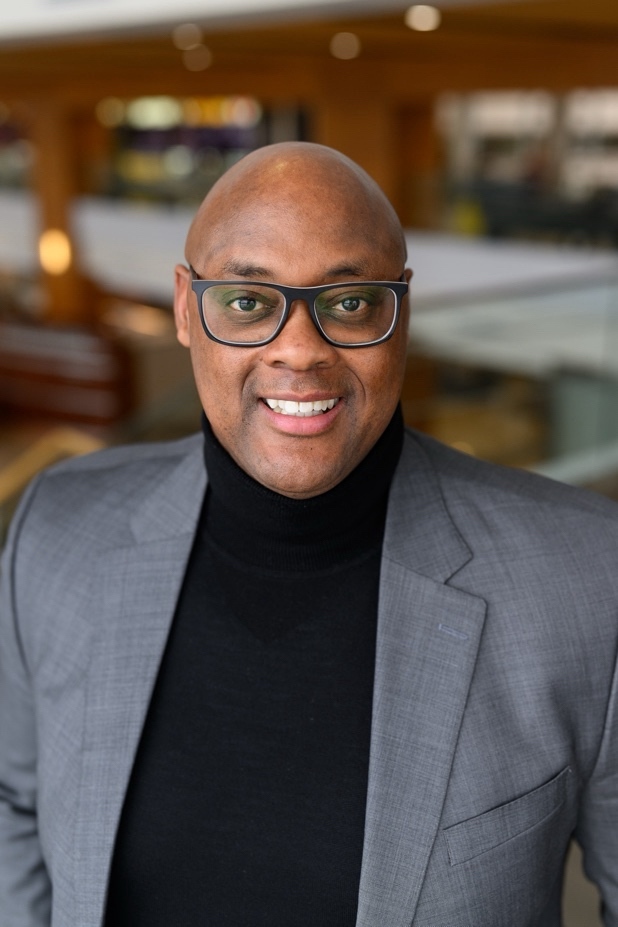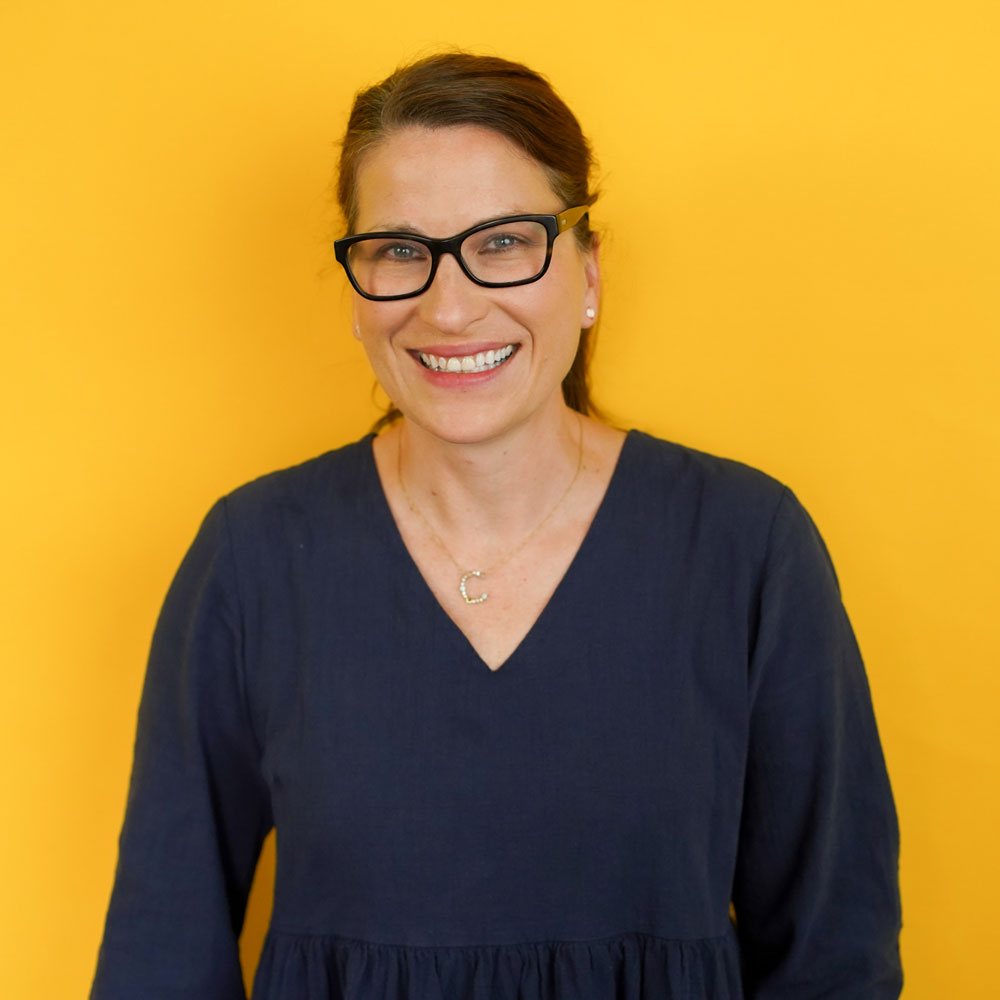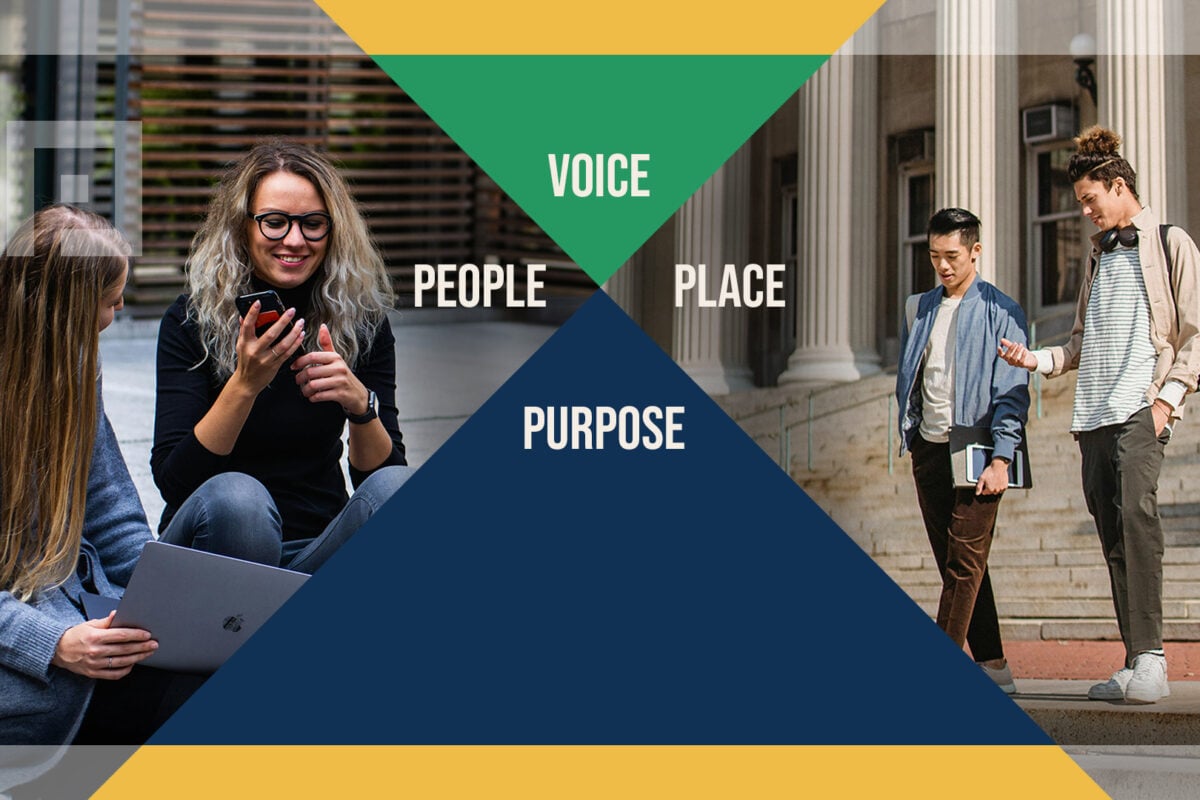Institutional change is hard, but change is what’s needed for many colleges and universities to overcome enrollment and value perception challenges. This Innovating Enrollment Success episode welcomes a higher ed change management expert who offers insights and inspiration on navigating change.
Show Notes
Fredrick J. Martin, MBA, MCA is associate vice president of human resources, UK HealthCare, which encompasses the hospitals and clinics of the University of Kentucky. He specializes in leveraging an institution’s core strengths to facilitate transformation and maximize cultural potential while expanding diversity, equity and inclusion.
This episode addresses:
- Understanding change management
- Driving organizational transformation
- Recognizing the need for change
- Winning over reluctant stakeholders
- Sustaining momentum and purpose
Paskill has worked on various institutional changes at universities, including rebranding and strategic brand positioning for Southern Nazarene University and supporting Neumann University during its transition from a college to a university.
Transcript
Cathy Donovan [00:00:00]
Hello and welcome to another edition of the Innovating Enrollment Success podcast, where we discuss a range of topics impacting higher education marketing to help keep us connected and hopefully create better outcomes.
I’m Cathy Donovan, Agency Marketing Director at Paskill, a higher education enrollment marketing firm that has weathered a lot of change in higher education.
We know institutional change is hard. It’s not like private industry where a new CEO can come in and just demand change. What makes higher ed great also makes it more complex. We like dialogue and inclusion from a lot of people. Colleges and universities have departments, committees, faculty, students, alumni, tradition.
But for many colleges and universities, a willingness to change is going to be their key to survival. Many institutions today face enrollment challenges, financial challenges, perception challenges. There’s the shifting admissions landscape. There’s also the stress of the job. Higher education has high turnover, especially in departments like admissions and marketing.
There’s so much change happening in higher ed, and its impact on marketers to promote an institution and enroll students can be tough. Which brings us to today’s guest. Fredrick J. Martin MBA MCA is associate vice president of human resources, UK HealthCare, which encompasses the hospitals and clinics of the University of Kentucky. Fredrick is an accomplished organizational transformation executive.
With a track record of creating business value and driving sustainable change across highly competitive and complex environments, Fredrick specializes in leveraging an institution’s core strengths to facilitate transformation and maximize cultural potential while expanding diversity, equity, and inclusion.
Throughout his 25-year career, he has consistently delivered game-changing cultural shifts and optimize team performance while enhancing the employee experience. Welcome, Fredrick.
Fredrick Martin:
Thanks, Cathy, for having me today. It’s awesome to be here with you and I’m excited for our conversation around change and higher education. And so thanks for having me. I appreciate it.
Cathy Donovan:
Well, let’s get started. I have lots of questions for you. So, the first is, you know, what is it about change that makes higher ed so nervous? And, you know, if you want to define change management and what role it can play in that.
Fredrick Martin:
Sure. No, great question. I will, I’ll start with the latter.
And so you think about change management, you think about it from the context in the simplest form is getting from a current state to a desired future state. So think of it always in the essence of if I am trying to teach myself how to ride a bicycle. And so, I am a novice at riding a bicycle today, and I want to be able to go from, you know, from going riding on the street to one day to being in a tour de France. And so how do I, what’s the change management process that I have to go to, to get to that future desired state.
When I think about change in higher education, you think about what, what things that higher education is very deep in, deep in tradition. Deep in tenure, deep in things that have lasted legacies for decades. And it’s really, and it can be really, nerve wracking or daunting to think about how those things will change or need to change, to meet the future, the current needs of that institution or the future needs when we, when we’ve held those traditions so deeply to our core and to our existence.
It can be difficult for leaders and folks in institutions to think about, is there a possibility of losing that? That’s often sometimes people think of change in the aspect that we’re changing something and somehow we’re losing something as a part of that. And we have to be able to shape that in a way to where, and it’s interesting.
I was just at a conference where we were talking about change and the idea of losing something. And I said, I don’t look at change from an essence of gaining or loss. through the lens of evolution. So everything has to evolve. So how do we continue to evolve as an institution, whether it be faculty members, whether it be staff or whether it be administration?
So how do we kind of have this continuous evolution process to make sure that we’re not only keeping those things that hold near and dear and true to us, that we’re grounded in our institutions, but also being flexible enough to understand what may need to change in order for us to adapt to the needs of today?
And also, even in some cases, predict what’s needed for the future.
Cathy Donovan:
So let’s talk about your experience with change. You know, what initiatives have you managed in the past? What are the roadblocks you’ve encountered and how did you work with teams to overcome them?
Fredrick Martin:
Sure, sure. I’ve been fortunate enough to be a part of some great organizational transformation initiatives.
Um, whether it be in health care from helping transform health care or being in higher education. Transforming HR organizations from inside of HR institutions and even my current role here at here at UK HealthCare looking at how can we change to meet the needs of our, you know, right institution as well as the health system itself.
And so everything my last three large-scale transformations have been around the HR transformation space. And so that is something that either I tell people I love it, or I’m a glutton for punishment because I do love being able to start with a clean sheet of paper or whiteboard to determine and figure out what’s possible.
My mantra in all of change is leave people in places better than I found them. And I think that’s, that’s pivotal and key to being a part of that process. I think every, back to your question around what’s been difficult with the challenges that I face, each organization or institution is different. I’ve been a part of some organizations where, quite frankly, the ego, what I call either personal ego or institutional ego can get in the way.
And what I mean by that is when an organization says to themselves, think about it, when, when was it in 2008 when too big to fail, when the banking system took place, when we get to a state to where we say as an institution that we don’t have to do anything different because we are who we are, we don’t have to do anything different because our students are going to continue to come to us.
We don’t have to do anything different because our enrollment is high. We don’t have to do anything different because, you know, because our brand speaks for itself. And so those can be barriers to success or change within an institution because, you know, yes, their enrollment numbers may be may be high and their graduation success rate could be also high as well, but it doesn’t mean that we can’t, we shouldn’t take a step back to look at and understand are we still meeting the overall needs of our student population of our faculty and our staff? I think one of the great things that COVID shined the light on and really highlighted for a lot of institutions across the board was the employee experience.
So you will hear a lot of people talking about the employee experience and what institutions are now starting to realize, um, and, and pay attention to is that the employee experience is far beyond your benefits and far beyond your pay. It is how our employees or staff are experiencing work every day.
And do they truly feel like they have a place where they can thrive? Their voices are being heard and they’re part of the solutions and opportunities that are being faced at that institution. And so being able to sort of kind of put your personal or institutional ego aside is something that I’ve seen organizations struggle with. As well as, you know, we have a lot of different programs and processes and organizations that have been built by some great people over decades of their time within that organization, and it doesn’t mean that there’s anything wrong what they built. But it is hard for leaders sometimes to be able to say what I built maybe 10 or 20 years ago needs to change. It needs to evolve. And while it may have served its time and its purpose in the beginning, it’s gotten to the point to where now we have to look at this thing differently and rethink. And that can be hard or challenging for leaders to be able to do. And what I often do in situations like that is really tap into what that person would like to have as far as their legacy, because no one is going to be at any organization or any institution for all their entire life, whether it be the retirement or moving on in some other phase or fashion.
And so what do you want your legacy to be? How do we set things up for not only the people that are there today, but the next generation that will follow them in the future? And so making that be the sort of the, the anchor, if you will, around, the changes that we’re implementing today will not only just benefit those here today, but we’re also building something for the future generations that attend this institution. It’s highly important in ways to kind of really help bring down the walls in that, in that space.
Cathy Donovan:
So it seems like part of change is the ability to recognize the need for it. So if you’d like to just talk us through how institutions might recognize the need for change and what steps should they take when analyzing the need for change?
Fredrick Martin:
Great question. I think the institution should really start from a place of, and this is where I believe is true, holds true for all, start from a place of what don’t I know about something. We often seek to solve problems or look to explore opportunities based on what we know about enrollment or branding or employee value proposition.
Our decisions are guided by what we know versus starting from a place of what don’t I understand about our employee value proposition. What don’t I know about our brand and what it’s saying in the market and letting that and letting that lead to a place of discovery and then allowing that discovery to be the space in where you can create and come up with new innovative and things that could that could lead you to that space of change that you’re, you know, that you’re looking for.
And so I say, first, starting from a place of what I don’t know about something. An opening of the door for discovery is first is I will say it’s the first and foremost and not sort of relying on what we’ve done this thing this way in the past and it was successful then. So let’s just sort of wash, rinse and repeat that same thing and hopefully get the results that we’ve gotten before in the past.
And the second part is being able to understand and I think align the experts in a thing to have insight and voice into a thing. And so I’ll, I’ll use example of whether it be recruitment. A lot of, you know, a lot of institutions are going through a place, a time where they want to recruit and retain and retain talent.
And what’s happening is I’ll see an organization or leaders go to a marketing department and say, hey, marketing department, I want you to build me a brand campaign around what it’s like to work here. And there’s nothing wrong with that. But what I, what I often find is what they don’t connect with their HR department and their recruitment department specifically around talent acquisition, because those are the folks that are really talking to the potential candidates and individuals that could join the institution every day and not getting that insight.
What ends up happening in most cases that you end up with a campaign that’s really more of a branding campaign of the institution versus a campaign that’s really geared toward talent attraction that speaks to an individual and to say, here is why you should come to this institution and do what you love to do here because we’re catering toward you and your needs.
Versus join this institution because we are ranked number one in this. We have this many accolades. We have this many student population that we serve and the campaign typically ends up being all about the institution and less about how you with that potential employee or staff or faculty member can thrive and grow within that institution.
And so, and again, all well intended, but how do you get the right people at the table to solve the right problem? This is a part of it too.
Cathy Donovan:
So what about those who are reluctant to change? There’s a lot of them. Um, how do you, how do you win over individuals who are unwilling to try new ways of doing business?
Fredrick Martin:
Never, never an easy task. I’ll say, I’ll say that. And it’s one that is, that is as old as the age, as old as the age of time. And so there’s two parts to that. I think one of the things from, uh, from the person that is either driving the change or initiating the change, it starts with them really being able to understand their stakeholders and know who their stakeholders are.
The second part of that is really being crystal clear about what you need from that stakeholder. Because often enough I’ve seen and I’ve heard this and I’m sure anyone listening to this podcast has experienced this too as well to where you will be in a meeting and individuals and folks will be talking about changing something and then someone will say, and I’ll say Larry for the, you know, for the sake of our conversation, someone says, well, Larry, we can’t do this because Larry won’t let it happen or this department won’t let it happen.
We have to get this group of people to say yes, or it won’t happen in some cases that is very, very true. But what I often ask individuals in that case to say that a fact or a belief, and that is a fundamental question that I don’t think people use enough to say, is that a fact that that Larry can actually make this thing stop in his track if he does not sign off on it?
Or is that a belief? Because over time within the organizational institution, we’ve trained ourselves to say we don’t get this person’s input then it can’t happen. And so I think really being able to kind of break those things down to understand is that a fact or a belief when we think about buy in and stakeholders.
The other part that I use in methodology that I use is called the four V’s method. And it’s like, does the person have a view, a voice, a veto, or a vote? And really being able crystal clear about what you’re looking for that person for. So if I’m looking for that person to see, they just have a view in it.
That really means being crystal clear with that individual that I’m coming to you to see if you see the problem or the opportunity, the same way that I do, how do you view this? If we’re talking about technology, for example, I want to see, do you view this problem the same way as having that we need to improve our technologies of being very crystal clear, the person that I’m looking for, I’m looking for your view in that.
If I’m looking for your voice in something, then I really want to get your insights on the possible solution for it. Now, the distinction is that doesn’t mean that you get to say yes or no. It doesn’t mean that we’ll get to that. We’ll use everything that you say. But what I’m looking for you for is your insights. Where’s your voice in this? So as I or the organization look to craft that solution or take advantage of opportunity, you may be able to see, Oh, I see, they took what I said into account and I can see it playing out in this particular situation.”
Vote, you know, do you get a vote? Does this person be able to say, yes, you know, yes or no this can happen. And being very clear about that in veto and that that comes back to that person that you say, or that department says, if this person or group of individuals say no, then it won’t happen. What typically happens is that, you know, organizations and leaders typically put everybody in that veto bucket. And that’s just not, and that’s just not the case. So really being able to have a clear view and understanding of who your stakeholders are and truly what power and influence they have within the institution is, is extremely important as you go through to push any change initiative.
Cathy Donovan:
So how do you build and sustain motivation while making change a positive experience?
Fredrick Martin:
Yeah, that’s, you know, motivation is a very tricky word. And here’s why I say motivation is a very tricky word, because I think that motivation wears off. I think motivation is a great kickstart. I think motivation is a great spark, but it is not lasting. And so if I will, if I were to give anybody advice on how do you sustain what I feel like you’re asking is the momentum around change is how do we ignite and continue to fuel people’s purpose?
And I think that’s really where we should be looking to do, because if I’m passionate about the purpose and locked in on the purpose of what we’re doing and my involvement in that purpose, and it aligns with my personal values and professional values, that burns forever. There will be days where you kind of look in the mirror and say, what am I doing here?
Um, but most of the days you will, you will wake up in the mornings excited about going and doing that thing all over again. So I think it’s less about relying less on the motivation and relying more on how we are aligning the purpose of the institution with individuals, personal value system and purpose that they have for themselves and how we draw upon that purpose as it relates to that particular change initiative. And being able to leverage that as the field that we need to keep things going.
Cathy Donovan:
This has been an awesome conversation. I’m motivated for more momentum. So I’m feeling it. You’re right. You’re so right.
Fredrick Martin:
Yeah. Think about momentum in this, in this aspect, if, you know, kind of going back to my cycling example in the beginning, I took up cycling probably about six years ago and I wasn’t, and I wasn’t motivated to do it and wanted to do it, but it was, it was only short lived.
And what, once I really started to identify myself as a cyclist and living into the purpose of being a cycle and thinking about, okay, if I’m a cyclist and how do I eat, how do I train? How do I ride like a cyclist? What do I do in order to do in this? So going out on the bike on Saturday mornings and riding 60 miles, we came more with joy than something, a task that I needed to do.
And so I think it’s no different when we’re talking about, you know, things that we want to do with within an organization. So how do we tap into the purpose of it all? Um, that’s something that’s huge in healthcare right now. That’s taking place where individuals are trying to figure out, especially after COVID, how do we put the purpose back into the work that our healthcare professionals? A lot of them lost doing COVID and so reconnecting people back to why, why I got into medicine in the first place is an extremely important initiative and thing that organizations if they’re not doing, should be doing right now because that’s going to be the lasting, secret sauce.
Cathy Donovan:
Amazing. Well, my last question was just to give you your final sign off, but I feel like you just gave it. Is there anything more that you’d want to add to, you know, for folks listening that are working in higher ed marketing to weather these seas of change?
Fredrick Martin:
Yeah, I will say this from a higher ed marketing standpoint is to continue to get out and meet with folks from across your institution at all levels and making and getting their voice and understanding and what they’re doing and what’s taking place because you’ll often find nuggets of greatness or inspiration. And that is easy enough. And we’ve all, we’ve all fallen prey to this. And no matter what our roles are in institutions, they’re sort of relying on our own beliefs and our own knowledge and skills. And so I would encourage folks to get out and meet and greet and talk with individuals across their institution to see what’s happening and to see if we’re thinking about, for example, how do we, you know, how do we get more students to come and enroll in our, in our institutions. Go out and spend time talking to students, spend most of your time talking to students about their experience and what brought them to the university or college.
And less time talking to agencies about here’s the branding or marketing campaign that we can put together that we think is going to work because what’s, what’s the power that’s going to really connect with people are those students that can see themselves and other students that are already currently there. And so I would encourage that.
Cathy Donovan:
Unless that agency is Paskill.
Fredrick Martin:
Unless that agency is Paskill!
Cathy Donovan:
Well, we can definitely, I think agencies still play a role. I think definitely listening to your students for sure. It’s a different kind of partnership. And I, and I think, um, higher ed that change is intense that’s happening. So like you, you need to know your own perspective, but I think collaboration and different, um, vantage points is are really key as well.
Fredrick Martin:
I absolutely agree with you on that and being and being able and comfortable enough to go out and understand where you need not only that resources inside into a particular thing, especially marketing that may not be in your own, that may not be in your own institution is extremely important. There’ve been a number of initiatives that I have run and started throughout my career where it was important to bring in that outside perspective and that outside and that outside help, because we needed that in order to meet the needs and the demands of, of that institution.
So I think that is, that is extremely important. And, and I will say this, that I, that I found and I, and I worked with everything from your big four firms, all the way down to mom and pops and the consistent thread for me through all of them, which I think that, uh, I’m sure Paskill and does a great job of is the relationship.
It’s connecting with the relationship. So it is the work that we’re doing is important and it’s critical, but the relationship that we’re building at that time is even much more important. So fostering that, that relationship is extremely crucial, um, part of that process.
Cathy Donovan:
100%. Well, Fredrick, thank you so much. If folks listening want to learn more about Fredrick, please find him on LinkedIn or see our show notes. You know, we know change is hard, but it’s, it’s easier when you have an experienced team guiding you in the process. So I just want to say thanks again, Fredrick, for being part of this conversation.
Fredrick Martin:
Thank you. It was wonderful.
Cathy Donovan:
Awesome. And good luck to you in your new role. That’s a big change for you.
Fredrick Martin:
It is. It is. I love change. And I’m, I’m excited. Thank you very much.
Cathy Donovan:
Awesome. Thank you so much





